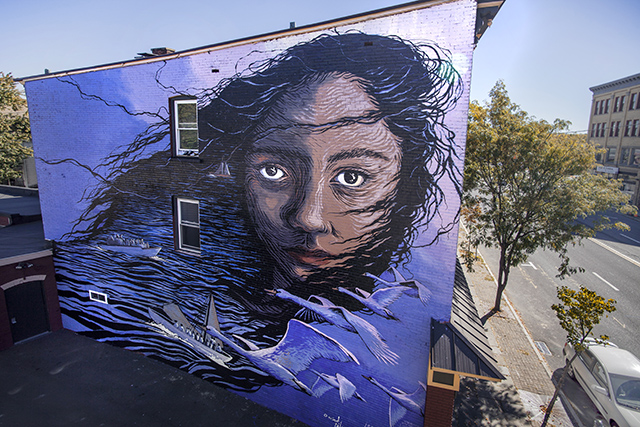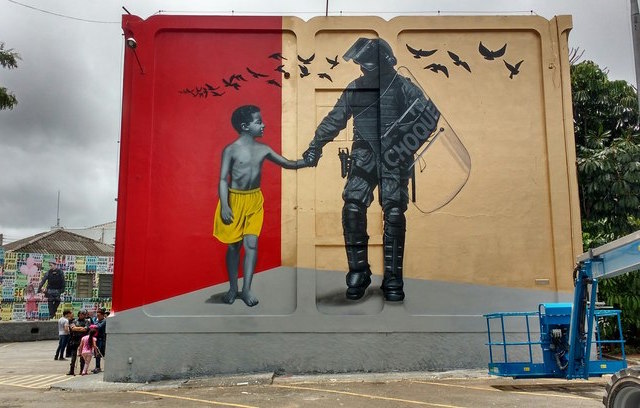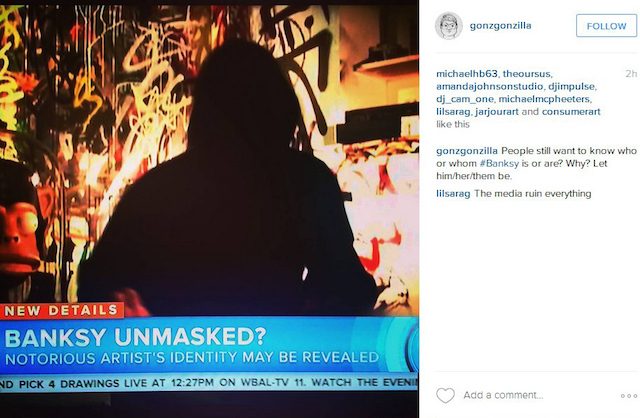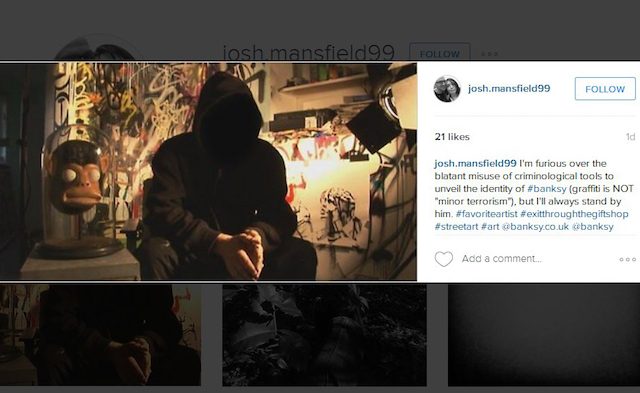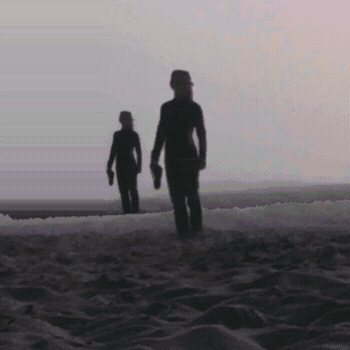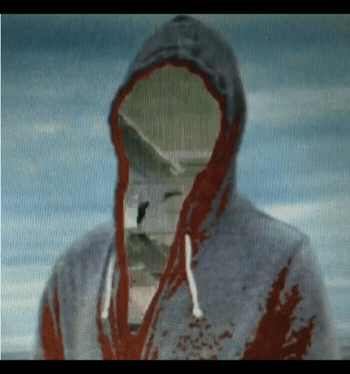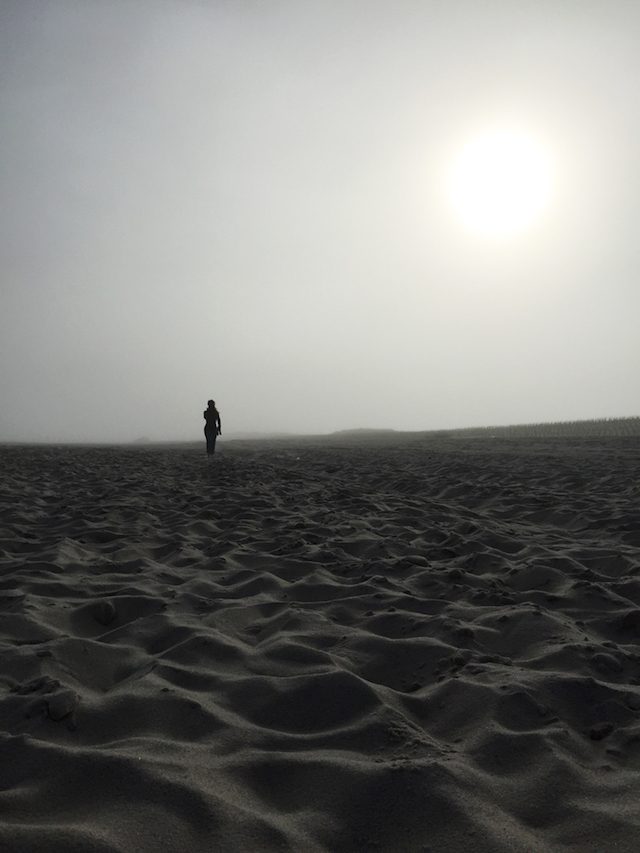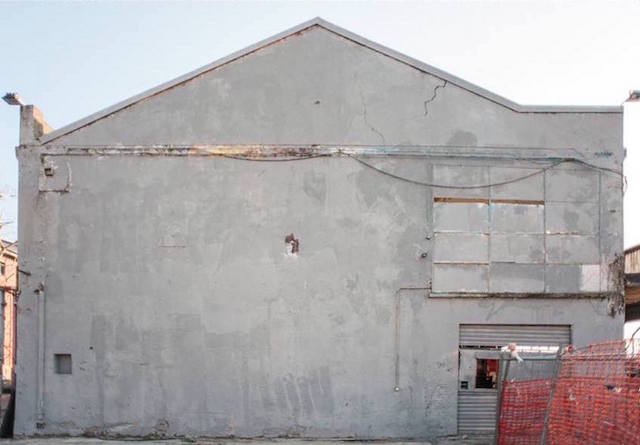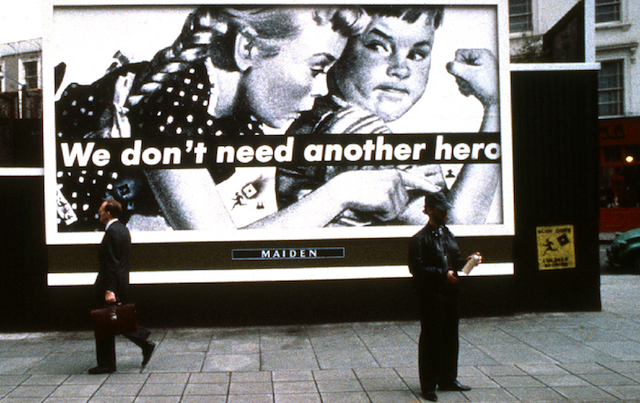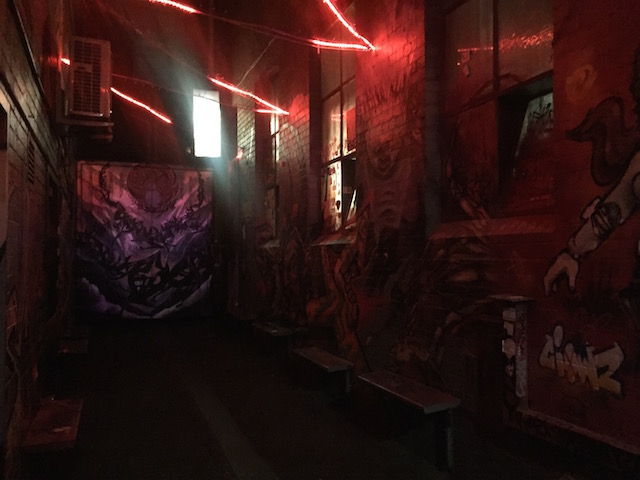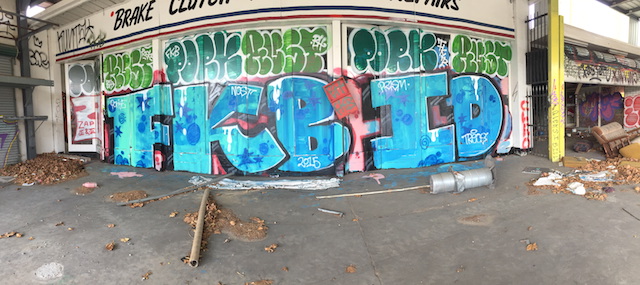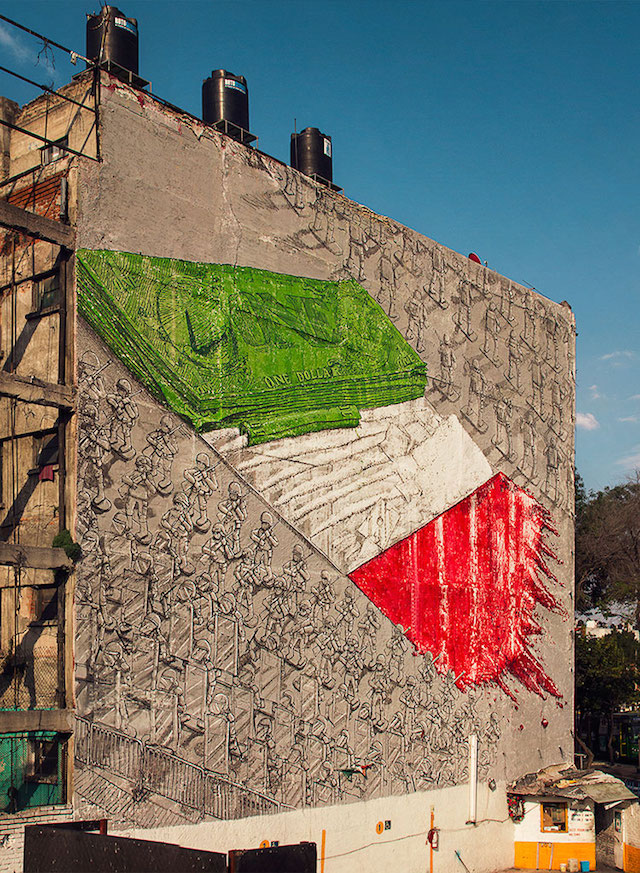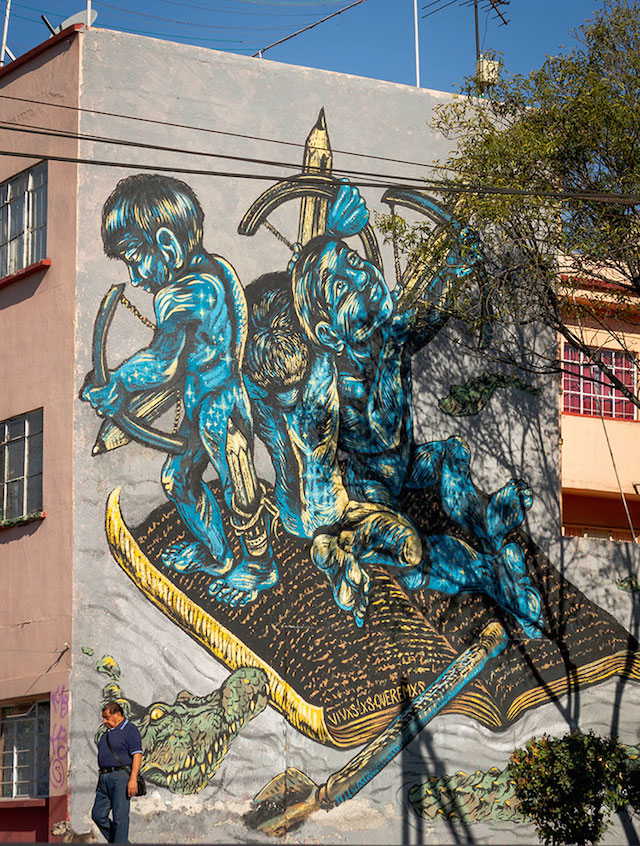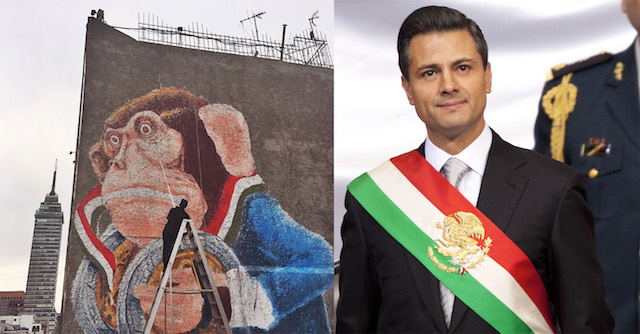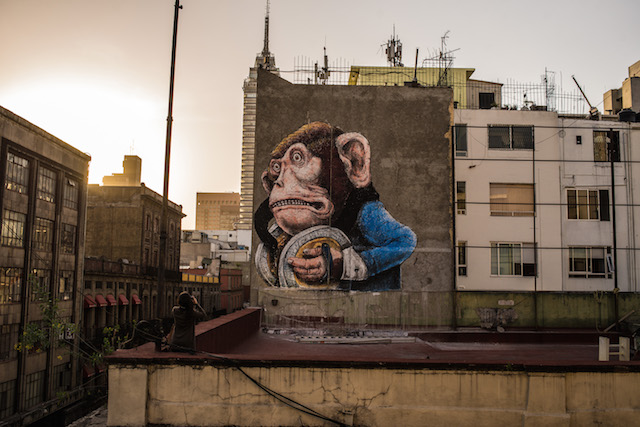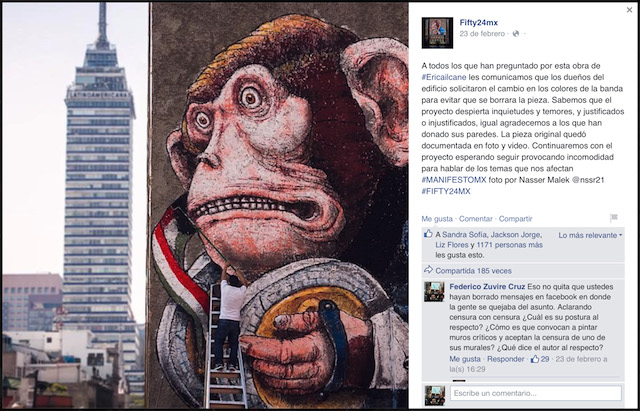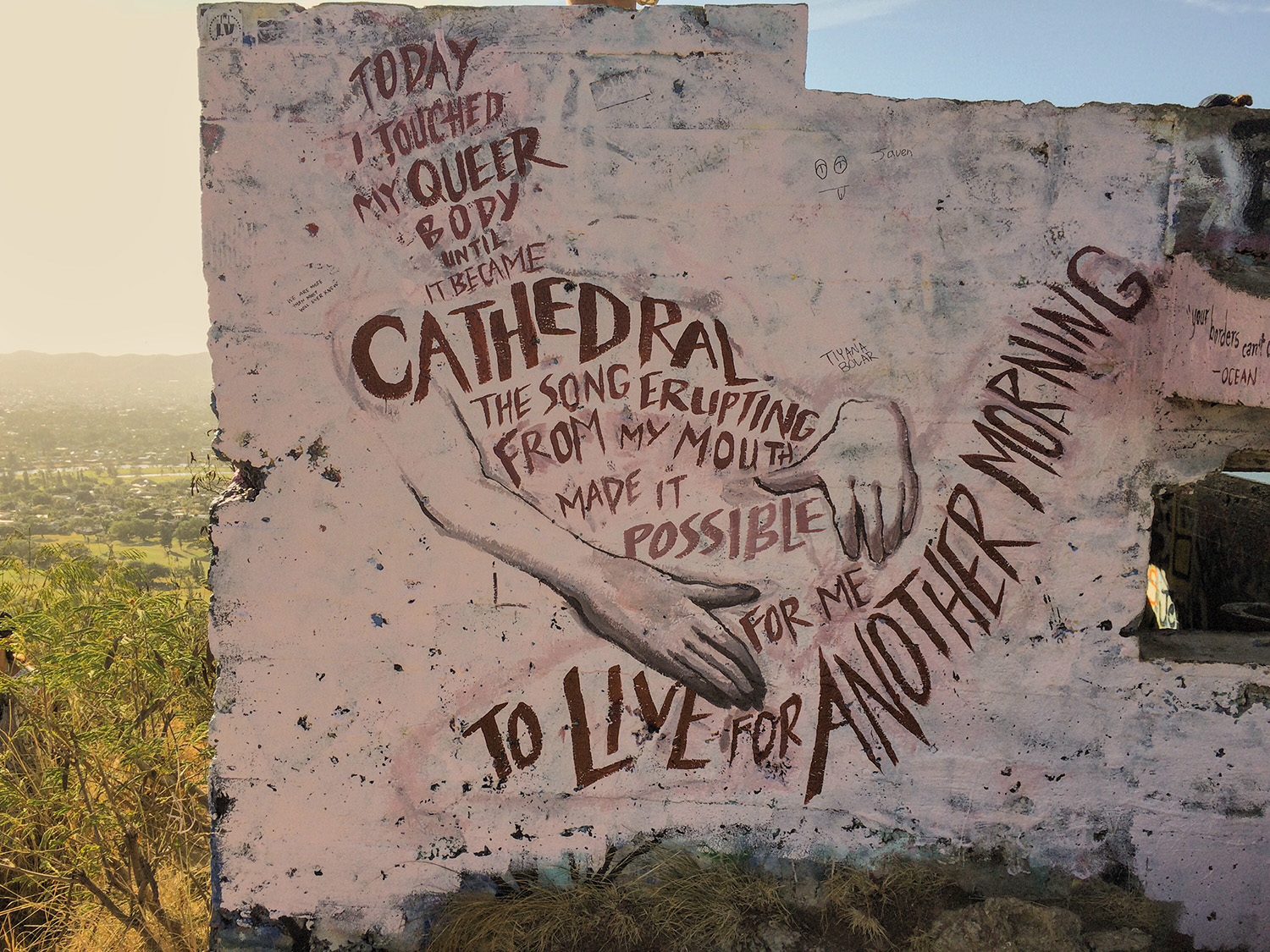
Jess X Snow (@jessxsnow), the author of this post, is a queer Asian public artist, filmmaker and poet.
The moment I walked away from painting this piece, I knew it was going to be defaced. I just didn’t know how soon. I made this piece as a prayer to the queer body—in a world where LGBTQ people are thrown into the margins. When home does not exist for us in this world, where can we discover home other than within the beauty of our own bodies? Sometimes that home-making looks like masturbation. This piece, resting at the top of the Lanikai Pillbox Hike in Kailua, Hawaii, lasted barely two days before the word “queer” was crossed out, and a penis was spray painted between the hands. This leaves me wondering: is queer street art/graffiti perpetually destined to be short-lived? What does that have to say about the safety of queer people of color in America and the world?
When queer people of color have no safe havens, religions, or churches in this society, we must turn to our own bodies for safety. In the same way a lover’s touch across a chest can calm the fiercest of storms, when I touch myself, I become my own queer lover. For one moment, all the forces that marginalize me cease to exist.
When I wrote this poem and birthed it into public space, I was thinking about what it could mean for queer people to happen upon acknowledgement of their own survival at the top of a long hike. I was thinking about queer immigrant children whose identities are rejected by homophobic parents and the complicated push and pull of duty and desire when you still love your family but also love yourself enough to know some identities run deeper than bone and cannot be unlearned. I was thinking about the dancers who lost their lives in the Pulse nightclub shooting, and all the queer bars and clubs across this world that have learned to operate underground. I was thinking about the late Chinese photographer Ren Hang, and queer and transgender warriors who were already living in a future so brilliant, this world was not ready for them. I was thinking about all the times where the violences of this world collapsed in on me and I too didn’t know how much longer I could stay in this world, but somehow, by touching myself, or making a piece of art, I rooted my body back into the Earth and found the resilience within me to live another morning.
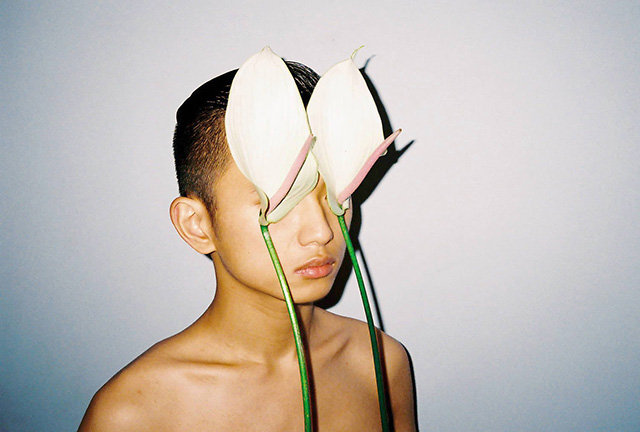
Birthing queer poems and murals often feels akin to what I imagine it would be like to be a mother to queer children. I imagine bracing them for the violence of this society, preparing them for a never-ending war—where they will be bullied, forced into a closet, or pressured to camouflage with their heteronormative surroundings. Yet no violence or silencing will stop me from giving queer art the beautiful life and care that it deserves. Body bent over the wall, for once in my life, I was able to share the intimate experience of my survival in public space and make a poem out of it. These words were sacred to me, and when they appeared as a monumental prayer, surrounded by the roaring Pacific, it felt as if there were not one but thousands of mornings left for me to live.
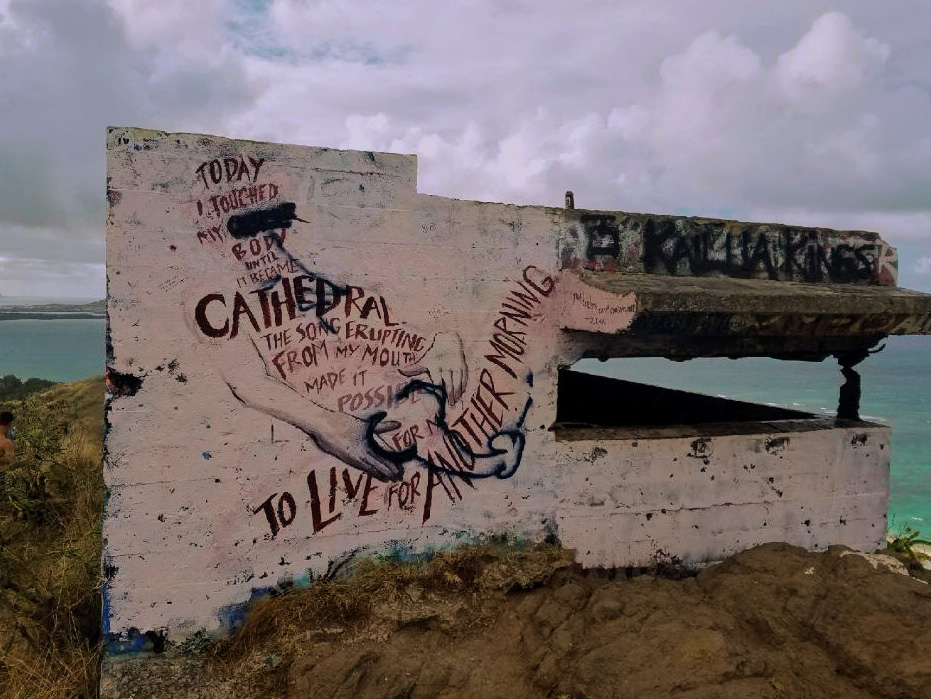
The erasure of the word “queer” and the painting of a penis on top of a queer woman’s art is a reflection of the patriarchal and homophobic world we live in. If queer survival and masturbation is so threatening to this society, then I suppose it must be some type of magic. If our words are to be feared, crossed out and set to fire, let them burn bright like a meteorite and blind those who cannot acknowledge the beauty of queer survival. What the homophobic and transphobic world doesn’t understand is that no matter how many times our identities are crossed out, there is an impenetrable home within our bodies, which we can always return to.
This resilience is ancestral. Like the genderless leopard slugs that hang upside down from trees and mutually penetrate, or polyamorous lesbian bonobo monkeys who resolve conflict through sex, queerness and sexual diversity has existed since the dawning of life on Earth. It is the construct of heteronormativity that has been short-lived.
I will continue to put queer joy and self-love into public space regardless of those it provokes because I believe in a queer future. I believe in a world where young queers can finally be affirmed by their own secrets on the streets and at the tops of buildings—whether they are just coming out, or have long celebrated their queer crushes, or are learning the beauty of self-pleasure for the first time. We have been invisibilized, burned, and marginalized long enough. Most importantly, I believe the truths that keep us living and in love must be made public.
Note: Thank you to queer multi-disciplinary artist, Jocelyn Ng and Hawaiian artist Ittai Wong for making this piece possible and uplifting me and the beautiful communities that surround you. A few of the themes brought up in this article came from “Toward a Queer Eco Feminism” by Greta Gard.
Thank you Ocean Vuong, and his poem “Ode To Masturbation” for giving me the courage to bring these thoughts to poetry. Thank you Tatyana Fazlalizadeh for giving me the courage to bring my poetry to the streets.
Thank you Ren Hang (March 30, 1987-February 24, 2017) wherever you are, I hope there is no censorship, or borders, only joy.
Photos by Chad Shomura, Ren Hang, and Ittai Wong

